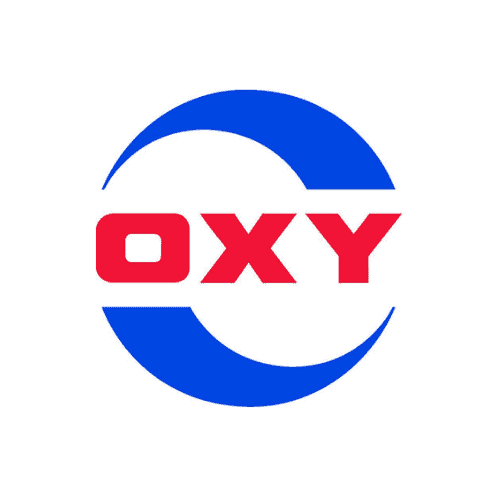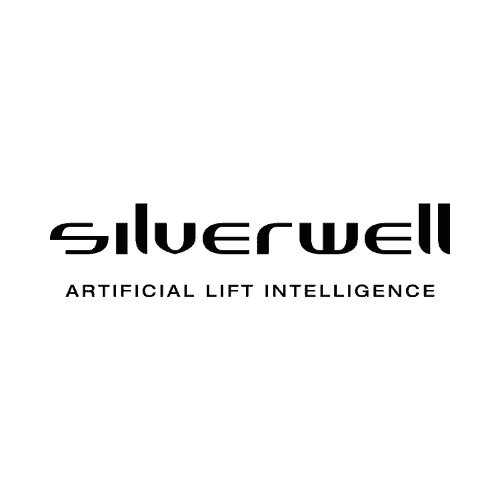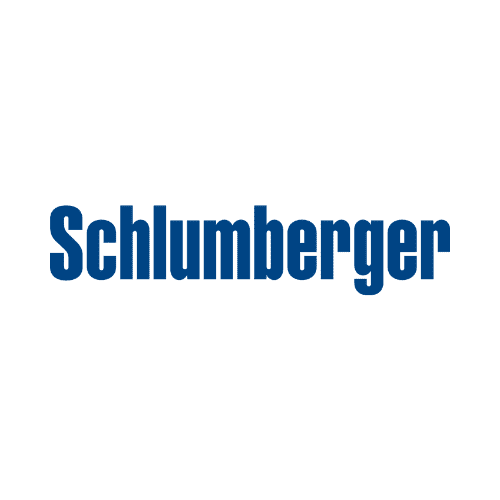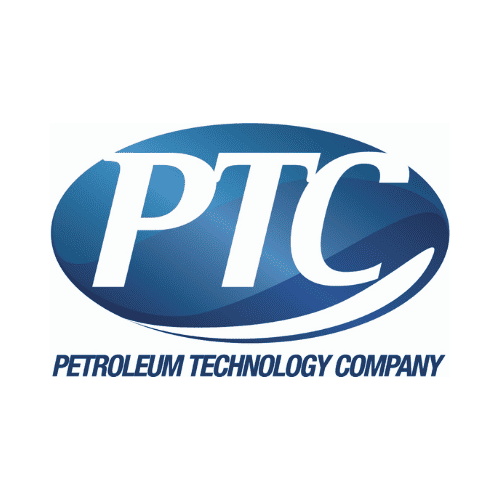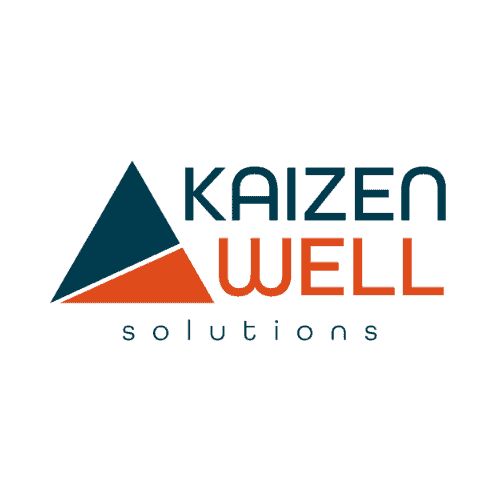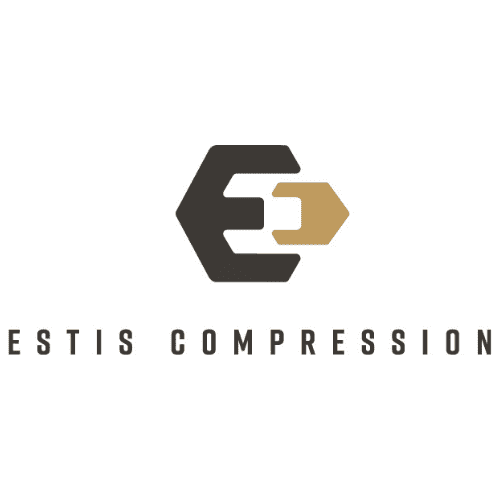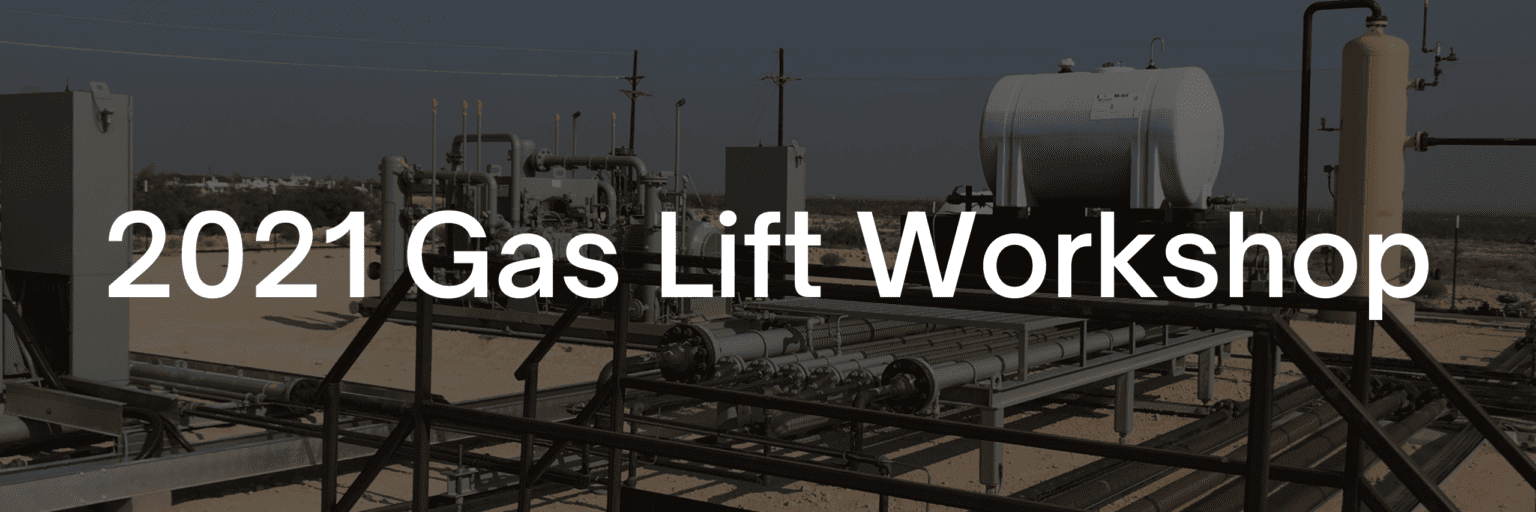The 2021 43rd Annual International Gas Lift Workshop was held virtually from June 7th to 11th, 2021.
2021 General Chair: Chandran Peringod with Brunei Shell
2021 Vice Chair: Anu Sood with ConocoPhillips
Event Flyer – English | Event Flyer – Spanish | Event Brochure | Exhibit/Sponsor

Tony Hord
Recently Retired, Formerly Completion and Well Management Principle Artificial Lift Engineer, ExxonMobil
Wednesday, June 9th | 10:30am
Tony W. Hord, Retired, Completion and Well Management Principle Artificial Lift Engineer, ExxonMobil Upstream Integrated Solutions Company.
Education: South Plains College 1974 – 1976, Texas A&M University 1977 – Engineering Technology, Specialty in Weld Design and Fabrication.
Career: In 1978 began working in the petroleum industry as a rig welder in Levelland, Texas. 1983 – 1985 started and operated a business as an independent welding contractor, T. W. Welding Service. Tony went to work for Exxon Production Company U.S.A. in August 1985 as a Production Operations Technician at The Means Field in Andrews Texas. From 1991 – 1993 he was assigned an Artificial Lift Engineering Technician in Midland Texas. 1993 – 1995 assigned as an Operations Supervisor offshore, Seal Beach California. 1995 – 1997 split time between Artificial Lift Technician (winters) and Workover Supervisor in Gillette Wyoming (summers). In 1997 he moved to Houston (HPO – Houston Production Operations) as a Subsurface Engineering Technician developing and executing fracs and stimulations in Colorado, Wyoming and New Mexico. Tony moved to Hobbs New Mexico in 2001 to become the New Mexico Field Supervisor for the ExxonMobil assets. In 2005 he moved to Lafayette, Louisiana and was the Operations Supervisor for the Inland Pecan Island and East Mud Lake areas. In August 2007 he was brought back to Houston, Texas to become the Gas Lift Coordinator for the ExxonMobil GOM assets. 2012 – 2015 Tony was a Gas Lift Advisor for the Global Gas Lift Center of Expertise. From 2015 to 2019 Tony was the Gas Lift Advisor for the Global Production Optimization Group. In 2019 He moved to the Completion and Well Management group as a Senior Technical Professional for Gas Lift and in 2020 became a Principle Artificial Lift Engineer for ExxonMobil Integrated Solutions Company.
Tony has been an active member of the API 19G Task Group since 2010 and a SPE member since 1998. He has presented at several of the ALRDC and the SPE Artificial Lift Conferences. Tony is also a co-inventor on 3 patents.
Tony retired from ExxonMobil February 1, 2021 after 35.5 years’ service.

Belle Ibanez
Shell Production Engineer Ursa TLP
Thursday, June 10th | 10:30am
After graduating from Texas A&M University in 2014, Belle joined Shell as a production engineer supporting deepwater Gulf of Mexico assets. Since then, she has worked in onshore and offshore roles and was appointed aSME in gas lift in 2019. Belle was introduced to gas lift in offshore well surveillance and troubleshooting and later got exposure to optimization, intervention, and design. Most notably, she supported the commissioning and start-up of subsea gas lift to a field in the Mars area. Belle, her fiancé Stew, and their dog Archie live in New Orleans and enjoy hiking, paddling, and are looking forward to a time we can once again travel and enjoy festivals.

Paulo J. Waltrich, PhD
Associate Professor, H. Mark Krause Jr. Professor, Craft & Hawkins Department of Petroleum Engineering Louisiana State University
Friday, June 11th | 10:30am
Paulo J. Waltrich is Associate Professor at Louisiana State University in the Craft & Hawkins Department of Petroleum Engineering and holder of the H. Mark Krause Jr. Professorship. Previously, he worked at Petrobras America in flow-assurance assignments for a deepwater field in the Gulf of Mexico, and at Whirlpool Corporation in the Corporate Innovation and Technology (CIT) division on the design and testing of innovative refrigeration systems. Waltrich’s research is recognized worldwide in the areas of multiphase flow in pipes, gas-lift systems, liquid-assisted gas-lift, liquid loading in gas wells, and worst-case-discharge calculations. Waltrich has authored and coauthored more than 50 technical papers and holds one US patent on liquid-assisted gas-lift technology. Dr. Waltrich was the recipient of the ASME 2019 Outstanding Faculty Advisor Award and received the National Best Master Thesis Prize by the Brazilian Society of Mechanical Engineering in 2009. Waltrich holds BS and MS degrees in mechanical engineering from Federal University of Santa Catarina, and a PhD degree in petroleum engineering from Texas A&M University. He is a member of Society of Petroleum Engineers (SPE) and American Society of Mechanical Engineers (ASME), and is an associate editor for the journal Multiphase Technology and Science. Dr. Waltrich is the co-founder and Chief Technology Officer for Lift Well International and co-founder of the software company NovaFlow LLC.
ALRDC is proud to offer the following classes as part of the 2021 Gas Lift Workshop. Each day features 2 courses, split into 2 sessions designed to be taken consecutively over the two day period. Classes will be accessed through Zoom.
View Continuing Education Course Outline Here
Students and furloughed or laid off employees are eligible for discounts on classes. Please contact us to receive a code to use for special pricing.
June 7 | 8:00am - 4:00pm CT
Session 1
Data Analytics for Gas Lift and Facility Engineers (GL 101)
Instructors: Rajan Chokshi, Vinicius Kramer, Sandeep Melkaveri
Instructors: Rajan Chokshi, Vinicius Kramer, Sandeep Melkaveri
View the flyer here
Data analysis means the process of cleaning, inspecting, transforming and modeling data with the goal of discovering new, useful information and supporting decision-making. In this hands-on course, the participants will learn some of the techniques and workflows applied to gas lift and production while reviewing code and practicing. The focus will be on the development of data-driven models while keeping our feet closer to the fundamental principles of gas lift.
This two-day course discusses use cases corresponding to production engineering and specifically gas-lifted wells and related facilities. The course is primarily intended for production and facilities engineers to enhance their knowledge base and technology awareness, while learning different data analysis techniques that can be applied to large data sets. After completing the course, participants will have a set of tools and some pathways to analyze and manipulate their own data in the cloud, find trends and develop data-driven models.
Teaching Approach:
Two (or time-permitting, three) problems will be presented during this virtual class using Zoom. For each, the instructor will demonstrate the solution of such a problem using a data analysis technique with Python code deployed in the Google cloud. Trainees will have the opportunity to solve a problem and tweak solution variables using a provided data set.
Material:
Power point slides, data sets, and Python code (Jupyter/CoLab Notebook) for practical problems. For hands on exercises, we will use the Colab environment available for free through the Google cloud. Trainees will need to bring a computer with a Google Chrome browser and a Google email account (available for free).
Knowledge of Python is not a must but preferred to get full benefit.
It is recommended that the students have access to two screens for simultaneous access to class content and Colab content*
Session 2
Unconventional Gas Lift (GL 102)
Instructors: Larry Harms, Tom Nations, Dr. Paulo Waltrich, Angel Wileman, Dr. Eduardo Pereyra
Instructors: Larry Harms, Tom Nations, Dr. Paulo Waltrich, Angel Wileman, Dr. Eduardo Pereyra
View the flyer Here
The objective of this course is to provide the participants with basic knowledge, practical tools and useful tips to enable profitable and reliable gas lift implementation and operations in unconventional plays. The participants in this course will be exposed to and interact with multiple concepts on properly applying gas lift in unconventional fields/pads/wells, including well designs, life of well production profiles, flowback strategies, reservoir considerations, downhole equipment design, equipment reliability, injection gas requirements, surface facilities designs concepts, flow assurance issues and optimization/troubleshooting. Additionally, the students will come away with a series of questions that they should ask themselves, internal support, field operators, and vendors to insure the best outcome of unconventional gas lift.
Teaching Approach:
The instructors have extensive experience in applying gas lift to unconventional fields and/or are experts in their area of interest.
Material:
Power point slides. For hands on exercises: Nations Consulting LLC. will provide a temporary license of SNAP for free. Trainees will need to have a computer capable of downloading Snap. Download instructions will be sent one week prior to the course start date.
June 8 | 8:00am - 4:00pm CT
Session 1
Data Analytics for Gas Lift and Facility Engineers (GL 101)
Instructors: Rajan Chokshi, Vinicius Kramer, Sandeep Melkaveri
Instructors: Rajan Chokshi, Vinicius Kramer, Sandeep Melkaveri
View the flyer here
Data analysis means the process of cleaning, inspecting, transforming and modeling data with the goal of discovering new, useful information and supporting decision-making. In this hands-on course, the participants will learn some of the techniques and workflows applied to gas lift and production while reviewing code and practicing. The focus will be on the development of data-driven models while keeping our feet closer to the fundamental principles of gas lift.
This two-day course discusses use cases corresponding to production engineering and specifically gas-lifted wells and related facilities. The course is primarily intended for production and facilities engineers to enhance their knowledge base and technology awareness, while learning different data analysis techniques that can be applied to large data sets. After completing the course, participants will have a set of tools and some pathways to analyze and manipulate their own data in the cloud, find trends and develop data-driven models.
Teaching Approach:
Two (or time-permitting, three) problems will be presented during this virtual class using Zoom. For each, the instructor will demonstrate the solution of such a problem using a data analysis technique with Python code deployed in the Google cloud. Trainees will have the opportunity to solve a problem and tweak solution variables using a provided data set.
Material:
Power point slides, data sets, and Python code (Jupyter/CoLab Notebook) for practical problems. For hands on exercises, we will use the Colab environment available for free through the Google cloud. Trainees will need to bring a computer with a Google Chrome browser and a Google email account (available for free).
Knowledge of Python is not a must but preferred to get full benefit.
It is recommended that the students have access to two screens for simultaneous access to class content and Colab content*
Session 2
Unconventional Gas Lift (GL 102)
Instructors: Larry Harms, Tom Nations, Dr. Paulo Waltrich, Angel Wileman, Dr. Eduardo Pereyra
Instructors: Larry Harms, Tom Nations, Dr. Paulo Waltrich, Angel Wileman, Dr. Eduardo Pereyra
View the flyer Here
The objective of this course is to provide the participants with basic knowledge, practical tools and useful tips to enable profitable and reliable gas lift implementation and operations in unconventional plays. The participants in this course will be exposed to and interact with multiple concepts on properly applying gas lift in unconventional fields/pads/wells, including well designs, life of well production profiles, flowback strategies, reservoir considerations, downhole equipment design, equipment reliability, injection gas requirements, surface facilities designs concepts, flow assurance issues and optimization/troubleshooting. Additionally, the students will come away with a series of questions that they should ask themselves, internal support, field operators, and vendors to insure the best outcome of unconventional gas lift.
Teaching Approach:
The instructors have extensive experience in applying gas lift to unconventional fields and/or are experts in their area of interest.
Material:
Power point slides. For hands on exercises: Nations Consulting LLC. will provide a temporary license of SNAP for free. Trainees will need to have a computer capable of downloading Snap. Download instructions will be sent one week prior to the course start date.
ALRDC is proud to offer the following technical sessions and panels as part of the 2021 Gas Lift Workshop.
Students and furloughed or laid off employees are eligible for discounts on sessions. Please contact us to receive a code to use for special pricing.
Wednesday
8:00 – 8:30
Welcome – Safety Moment – Word from ALRDC President
8:30 – 9:00
Dual String Gas Lift Optimizations Using Electric Gas Lift
Dr. Ahmed Al Shmakhy, ADNOC
Most of the world’s gas lifted wells are under-optimized as reservoir conditions and fluid composition change over time. GLV changes are required to manage maintain optimal production, that often necessitate well intervention. It is also not easy for operators to make data-driven decisions on a day-to-day basis to assure continually optimized production.
These challenges are further amplified with dual completion strings: fluctuating casing pressure; unpredictable temperatures due to the proximity of the two strings; and inability to individually control the injection rates to each string. The string dedicated to the formation with lower productivity and reservoir pressure tends to “rob” gas from other string so that one string is preferential produced. Production optimization in such cases requires frequent, costly, and risky intervention which presents an opportunity to re-imagine gas lift well design.
ADNOC in collaboration with Silverwell worked to deploy a Digital Intelligent Artificial Lift (DIAL) system, which consists of multiple ported “mandrels” placed at GLV depths. These mandrels are connected to the surface operating system with a single electrical cable. The ports can be selectively opened or closed by sending an electric signal from the surface unit. In addition, pressure and temperature sensors are also placed which help record these parameters in real time.
Such a system enables the choice of depth, injection rate, loading and unloading sequence to be controlled from the surface. Realtime optimization is possible as pressure/temperature data helps draw accurate gradient curves. This system makes gas lift optimization possible in dual gas lift wells.
It has been estimated that this technology delivers a production increase approaching 20% for single completion wells and exceeding 40% for dual-string gas lifted wells. A business case and implementation plan were developed to pilot a dual-string digitally controlled gas lift optimization system.
This presentation, drawing from and updates the work described in SPE-196146-MS, paper will describe, the screening, business case preparation, risk assessment and validation process, conducted prior to implementation of a fully optimized dual string gas lifted well.
9:00 – 9:30
Real time production optimization in conjunction with virtual flowmeter
Bob Okhuijsen, Siemens Energy
Digitalization solutions are often implemented and evaluated as stand alone systems. The true value
of these type of solutions is however revealed in an integrated ecosystem.
This presentation shows the merits and challenges of one remarkable powerful combination: real time
production optimization and a virtual flowmeter.
9:30 – 10:30
Exhibition
10:30 – 11:00
Keynote Speaker – Tony Hord
TBA
Coming Soon!
11:00 – 12:00
Panel Discussion
TBA
12:00 – 12:30
Exhibition
12:30 – 1:00
Troubleshooting Gas Lift Wells Using Simultaneous Acoustic Surveys
Gustavo Fernandez, Echometer
The number of Gas Lift systems have increased significantly along with unconventional wells, the need of understanding the performance and troubleshooting Gas Lift systems is now even more relevant for operators. Tubing-casing communication is one of the biggest issues and it can be identified from surface using a simple, quick, safe and effective simultaneous acoustic survey to find holes in tubing or leaky gas lift valves that are above the liquid level. Both wired and wireless acoustic equipment can be used to perform this acoustic analysis. Two guns with microphones are connected to the wellhead, one gun is connected to the tubing and the other gun to the casing-tubing annulus. One of the guns is used to release a pressure wave down the well either through casing or tubing (usually down the tubing) while the microphone on the other gun just listens for possible echoes from tubing-casing pressure communications (tubing holes and/or leaks). Using Wireless acoustic guns, both tubing and casing acoustic signals are recorded simultaneously. Overlaying tubing acoustic traces on top of casing acoustic traces facilitates the detection of pressure communication point(s) and improves the accuracy of its depth determination. This technique and analysis method is mainly applied to troubleshoot Gas Lift wells but it can actually be applied from Plunger lift wells to almost any type of well with casing-tubing configuration, that are not full of liquid. Analysis of acoustic data along with wellbore schematics, valves design, plus teardown reports will verify the causes of pressure communications identified on various Gas Lift wells.
1:00 – 1:30
Gas Lift in Vaca Muerta- Plan, Implementation, and Lessons Learned
Mario Ottulich & Luciana Masud, Vista Oil & Gas
The present work summarizes planification, implementation and lessons learned on Gas Lift in Médano de la Mora Field. Considering the different artificial lift options for multiphase flow horizontal wells and the acquired knowledge from North America´s shale areas, Vista Oil & Gas decided to implement gas lift as the artificial lift system to be used for the Unconventional formation Vaca Muerta, Argentina. (62)
1:30 – 2:00
Intermittent gas lift, the answer to significantly reducing daily gas injection volumes and lease operating costs in low producing volume wells.
A. Stan Logie, Logie Gas Lift Consulting, LLC
How can a company efficiently produce gas lift wells to abandonment rates without using high-capital-expense rod lift? For savvy operators who must reduce operating expenses in these times of financial austerity, a proven and practical solution is Intermittent Gas Lift (IGL). The average installation costs for a 10,000’ well; $8,000.00 on IGL and $150,000.00 on rod lift, so the savings start from the very beginning
2:00 – 3:00
Exhibition
Thursday
8:00 – 9:00
Diversity, Equity and Inclusion in Artificial Lift
(Panel Discussion)
Angel Wileman, SwRI – Moderator
Kimberly Hoyle, Chevron
Charli Matthews, Empowering Brands
Gustavo Fernandez, Echometer
As the global economy grows, so does the diversity within the oil and gas industry. More diverse companies make better business decisions and are more profitable than homogenous companies. The industry has become more diverse through implementing inclusive hiring practices and equitable opportunities for under-represented groups. However, for many people working within the industry, this work has seemingly gone on behind the scenes without much guidance on how the employees can help further DEI. If you’re thinking, “My company talks about DEI all the time, but I don’t really see any lasting change,” or perhaps “I’m just one person, how can I help?” this session will help answer those questions of how you can be an ally and help promote DEI in your workplace. Let’s move from talk to action and make our workplaces more inclusive, attract the best talent, and work together to make those strategic decisions. Panelist: We are seeking panelists who are active in furthering diversity, equity, and inclusion in their workplace. Panelists should feel comfortable discussing real actions that everyday employees can take to create change in our environment.
9:00 – 9:30
Overcoming Inefficiencies of Annular Flow in a Hybrid Gas Lift Well
Charles Kubacak, Ovintiv; Eric Hale + Matt Young, Flowco Production Solutions
Flowco engineers partnered with Ovintiv to analyze past production profiles to create a more efficient design for future wells in the same landing zone. This new concept in gas lift design, was engineered to accommodate higher liquid rate initial production, as well as lower rate later life production without the need for a work-over to make the production change. Reservoir data and predicted rates from similar rock were reviewed prior to the solution selection. Deployment of permanent downhole gauges in these systems was critical for accurate measurement of flowing and static bottom hole pressure (BHP) and provided verification of the optimal and efficient point to switch production from annular to tubing flow.
9:30 – 10:30
Exhibition
10:30 – 11:00
Keynote Speaker – Belle Ibanez
TBA
Coming Soon!
11:00 – 12:00
Panel Discussion
TBA
12:00 – 12:30
Exhibition
12:30 – 1:00
Remotely Operated Gas Lift Valves in Permian Basin Non-Conventional Wells
Johannes Visser, Chevron
We present a review of new gas lift technologies designed to deliver increased production rates when compared to conventional gas lift systems and demonstrate the applicability of these systems in unconventional development wells in the Permian Basin. Ongoing evaluation of these technologies enable maturation thereof and creates the opportunity to combine with integrated production optimization and autonomous operations in the future.
We focus on the comparison between conventional gas lift technologies and the electrically operated gas lift valve technologies based on multiple parameters defining gas lift efficiency.
The results from wells employing electrically operated downhole injection technologies provide a deeper point of injection and conserve surface injection pressure, reducing flowing bottom hole pressure. We present the opportunity to deploy the technology on wells with a range of the inflow performance spectrum in the Permian Basin.
Several Gas Lift indicators were used for efficiency evaluation criteria during the field trials: Depth of injection, multi-pointing elimination or reduction, and properly-sizing injection port to enable gas injection at critical flow. Downhole and surface conditions were continuously and remotely monitored, and included pressure and temperature sensors at each station, both inside and outside of tubing.
We discuss results that demonstrated the benefits of preserving Gas Lift pressure for single point of injection as deep as possible. These results delivered performance increase, reduced uncertainty in diagnostics and well performance analysis and enhanced completion designs that included the remote operated valves.
In conclusion various scenarios and opportunities are presented for the applicability of this technology and how it would enhance artificial lift operations in the Permian. We discuss how the technology opens up enhanced recovery and production acceleration potential, including driving automation thereof.
1:00 – 1:30
Gas Lift Valve Open and Closing Behavior Observations Seen While Conducting Dynamic Performance Testing in Accordance With API 19G2 Annex H
Understanding gas lift valve throughput and opening and closing behavior is essential for completion design and optimizing gas lift performance. Gas flow performance testing in accordance with API 19G2 Annex H – Dynamic Performance Testing is an industry-recognized method for gathering these data. One of the required measurements of the standard is the valve opening pressure, both pre- and post- gas flow testing. This presentation investigates the effects of cooling due to gas expansion on the measured valve opening pressure when Dynamic Performance Testing is performed.
1:30 – 2:00
Taking Charge of Flowing Tubing and Injection Pressures to Optimize Gas Lift Wells
Larry Harms & Tom Nations
Surface pressures are VERY important if you want to get the best performance at optimal cost on gas lift wells.
We continue to see engineers and operators taking these as fixed instead of working across discipline boundaries to have the input and collaboration needed to operate gas lift wells optimally.
Examples of how much difference surface pressures make on gas lift well performance and costs will be given along with how to work across the gas lift “natural work team” to optimize pressures.
2:00 – 3:00
Exhibition
Friday
8:00 – 8:30
Electric Gas Lift Using Existing Side Pocket Mandrels – Is It Possible?
Brett Bouldin, Wireless Instrumentation Systems AS
Conventional gas lift valves placed on the exterior of the tubing string to unload and operate well production began use in the oil patch in the 1930s. In the 1950s, Side Pocket Mandrels were developed to permit valve placement within the tubing so that changes could be made by through-tubing intervention rather than a well workover. In the 2000s, many proposed to add downhole sensing and flow control to gas lift wells and success has recently been realized with the development of tubing-conveyed valves equipped with an electrical umbilical to the surface. Like conventional valves, these electric gas lift valves (eGLVs) are placed on the tubing exterior and conveyed into the well during the completion installation. Most needs for intervention have been eliminated, being ideal for remote and inaccessible areas or in high deviation wells where slickline is not practical.
8:30 – 9:00
High Pressure/Single Point Gas Lift Applications (Including Hybrid with “Conventional” Gas Lift)
Tom Nations & Larry Harms
High pressure/ single point gas lift (HPSPGL) is being applied more and more on unconventional wells because of the advantages it can bring when compared to ESP’s, beam pumps and “conventional” gas lift (CGL) but the applications don’t stop there. Examples of applications on conventional wells and gas wells will be given along with an update on the applications in unconventionals.
Also, details will be presented on how to combine HPSPGL with CGL to get a hybrid which can leverage the strengths of both.
9:00 – 9:30
Logic Based Injection Leads to Quicker, Deeper, Smarter Single Point Injection
Adam Anderson, Innovex
Gas lift as a form of artificial lift has been the choice of many operators for decades. We will take a dive into the value propositions and operation of a cost-effective and simple system that utilizes two hydraulic control lines, the differential pressure level between those lines and an automated surface control system to selectively open and close valves enabling deeper gas injection and optimal production.
How can we inject deeper, quicker, and smarter?
9:30 – 10:30
Exhibition
10:30 – 11:00
Keynote Speaker – Paulo Waltrich, PhD
TBA
Coming Soon!
11:00 – 12:00
Panel Discussion
TBA
12:00 – 12:30
Exhibition
12:30 – 1:00
Electric Gas Lift Valve Flow Loop Testing
Michael Romer, ExxonMobil
A novel electric gas lift valve was tested in a liquid flow loop to establish its performance characteristics, better define its operational envelope, and identify potential design improvements. A custom skid was fabricated that could be used to simulate gas lift unloading operations for unconventional wells. Various tests were conducted for valve characterization (flow, power, leakage) and evaluation of erosion resistance. This presentation will describe the advantages/drawbacks of the tested system as an alternative to conventional gas lift, the experimental facility, the insight gained through testing, and some of the upgrades being considered/implemented to improve the valve system’s performance.
1:00 – 1:30
Shale Plays and Understanding Multipointing Advantages and Disadvantages
Dean Gordon
The choice of gas lift for unconventional shale plays is proving reliable and, in most cases, the lowest lifting cost per barrel when suitably applied. Current horizontal drilling and completion technology have provided many challenges in today’s daily production practices. Starting out as high fluid and gas rates carrying large quantities of frac sand to surface, flush production from shut ins (+- 10,000 ft HZ) and declining reservoir pressures has compelled operators to reevaluate long term lift choices.
Commonly production ranges start between 2000-5000 BLPD with gas rates greater than 2 MMCF day and associated water cuts between 50-100% or what could be called frac fluid recovery while lifting / producing these rates from 10,000+feet TVD .Applying a design to kick off well initially, allowing to let flow and then operate 1-2 years later when production rates are down to less than 500 BLPD creates enormous challenges particularly when based off historical industry design procedures. The single biggest deterrent is the unloading practices used by operators.
What we once knew as “Multi Point” injection was more than likely gas lift intermitting between two or three valves. With today’s gas lift, Multi Point injection is more likely the required injection gas volume being distributed through two valves with no intermitting at all. IPO valve port sizes play a big part and experience has shown some positive results
Understanding valve performance and how it relates to possible multi point injection is vital. A typical temperature swing between static, initial flowing to future flowing temperatures is a gas lift engineers worst nightmare when using N2 charged IPO valves. This temperature range is frequently between 100 F up to 220F for upper valves.
Smaller ports offer the advantage of less tubing effect / greater casing stability but have a reduced gas passage capacity. Larger ports may pass the required volume but creates the opportunity to reopen a valve above with a large fluid tubing slug. Understanding the IPO valve port sizes and how they play a big part in daily operations has shown some positive results.
Using NODAL programs combined with VPC or other dynamic simulators provides greater simulation of injection gas volume distribution relating to critical velocities.
1:30 – 2:00
Closing Remarks – Door Prizes
2:00 – 3:00
Exhibition
Presenter Resources
June 9th: Greg Stephenson & Michael Romer
June 10th: Angel Wileman & Matt Young
June 11th: Anu Sood & Rosmer Brito
The Artificial Lift Research and Development Council and its officers and trustees, and the Gas Lift Workshop Steering Committee members, and their supporting organizations and companies (here-in-after referred to as the Sponsoring Organizations), and the author(s) of this Technical Presentation or Continuing Education Training Course and their company(ies), provide this presentation and/or training material at the International Sucker Rod Pumping Workshop “as is” without any warranty of any kind, express or implied, as to the accuracy of the information or the products or services referred to by any presenter (in so far as such warranties may be excluded under any relevant law) and these members and their companies will not be liable for unlawful actions and any losses or damage that may result from use of any presentation as a consequence of any inaccuracies in, or any omission from, the information which therein may be contained.
The views, opinions, and conclusions expressed in these presentations and/or training materials are those of the author and not necessarily those of the Sponsoring Organizations. The author is solely responsible for the content of the materials.
The Sponsoring Organizations cannot and do not warrant the accuracy of these documents beyond the source documents, although we do make every attempt to work from authoritative sources. The Sponsoring Organizations provide these presentations and/or training materials as a service. The Sponsoring Organizations make no representations or warranties, express or implied, with respect to the presentations and/or training materials, or any part thereof, including any warrantees of title, non-infringement of copyright or patent rights of others, merchantability, or fitness or suitability for any purpose.
Please click here to watch the recorded training session for presenters.

